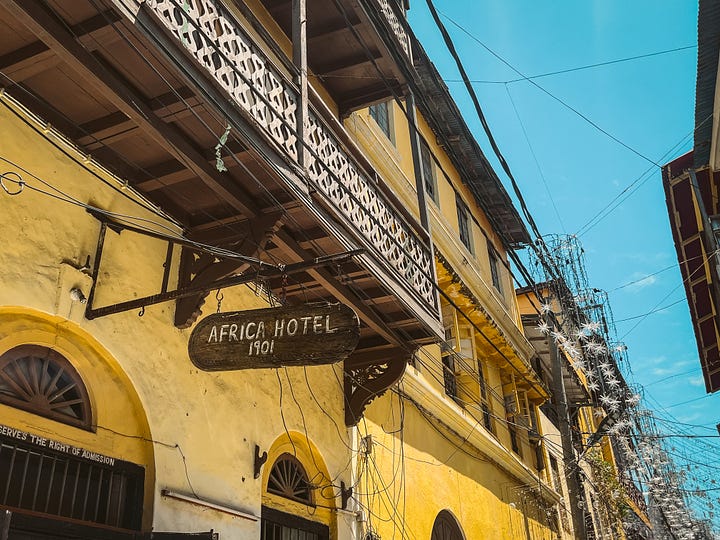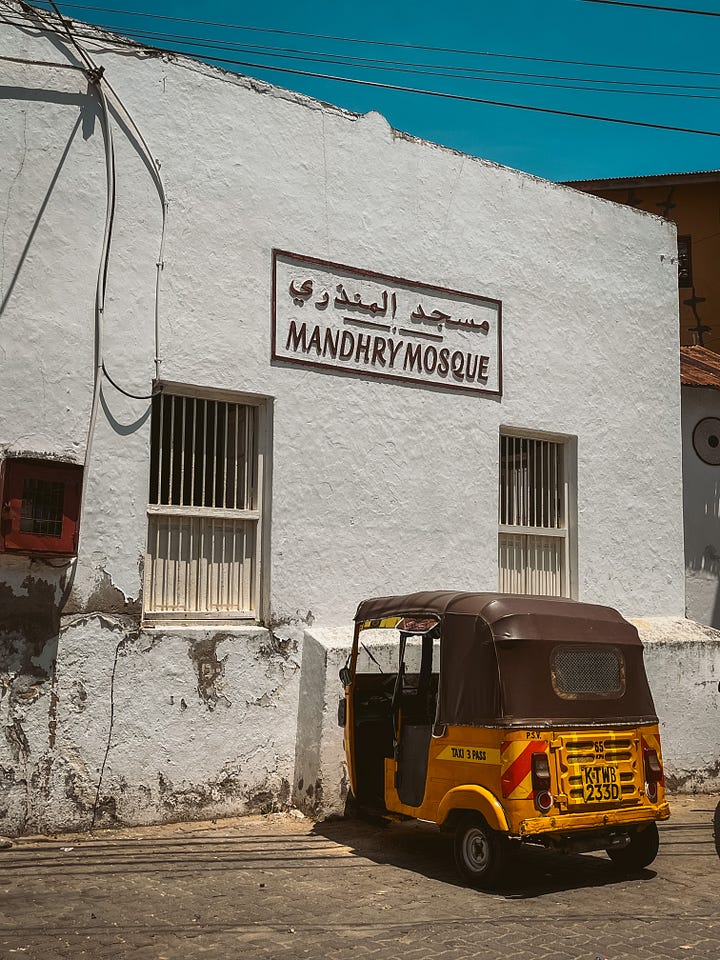Mombasa… what a mad place! It’s hard to think of anywhere else that is as much of a vibrant melting pot of cultures than Mombasa. It’s a Swahili-Arabic-Indian/South Asian mix. Mombasa, the second largest city in Kenya, is located on the east coast and has an extremely rich history. First impression - “this place is crazy”. We weren’t impressed. But after a few days there, spending some time enjoying the details of the old port town, it started to grow on us.
Mombasa has been THROUGH it. The Portuguese arrived there in 1593 - good ol’ Vasco de Gama. After 100 years the Omanis came. Then the Portuguese came back for a year of sniffing around, before the Imamate of Oman dug in his heels again. After another hundred years, the British colonizers arrived, and after yet another interruption by the Omanis, it became British East Africa until 1963. Mombasa was the first capital of British East Africa, so it just shows what an important and strategic location it was.
All of that makes for an old town with very interesting architecture. It’s a mix of old Arabian, Swahili, Portuguese, old British, and South Asian designs, characterized by raised balconies, wooden windows, large carved wooden doors, and white coral walls. The entire old town is a UNESCO heritage site, and most of the buildings are under conservation. Unfortunately this also means that many buildings have been left to ruin, given that few people can probably afford to restore them in a way that preserves the traditional Swahili architecture. In the 19th century word carving emerged as a symbol of Swahili art, especially when it came to doors.
Let’s start our stroll at the old port, where the old post office building is standing since 1899 - hard to believe that it is able to survive so well in the harsh climatic conditions at the coast. The opening of the post office changed the lives of the Indians living and working on the East African railways - they were finally able to send news and money home to their families. One trait that stands out in Mombasa architecture are the covered wooden balconies.
The Africa Hotel was built in 1901 and is an example of a “Mombasa Traditional House”. It has a two-storey carved wooden balcony done in a geometrical design, with some Indian influence also evident. A guest who stayed there back in 1904 described the place as smelling like “rancid ghee, curry, unsanitary drains, decaying fish, and unwashed humanity”. Imagine leaving that in a google review… Just down from Africa Hotel is the oldest mosque in Kenya, The Mandhry Mosque, built in 1507, is still in use today by Mombasa’s large Muslim population.




Along a narrow street, not far from Fort Jesus (a well-preserved 16th Portuguese military fortification), is Ali’s Curio Shop. The building itself was the first police station in Mombasa, built by the English in 1898. The building was built using materials that were also being used at the time to build the railways, and the walls themselves were built with coral stone, lime, and mortar. The building has European and Swahili elements, with a veranda surrounding the whole building, but is considered a classic example of colonial architecture of Mombasa.
The spice market is a must-see in Mombasa, and was our chance to stock up on our favorite “African tea spice”. The spice market is a great example of Indian culinary influences in Mombasa. It’s a covered market with many stands run by extremely friendly spice vendors who offered up so many of their spices for us to try - “smelling is for free”, they would always shout at us. If you’re lucky enough, you might even get to meet the Spice Girlz…



There were much too many interesting sites in the old town, we couldn’t possibly describe them all. So we will leave you with some more photos we took during our stroll through the narrow streets of Mombasa. Enjoy!
















